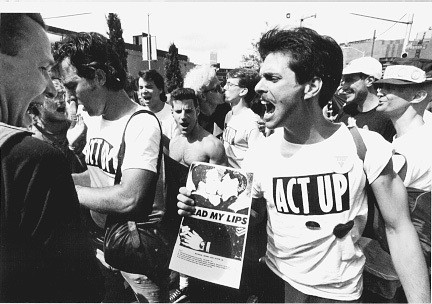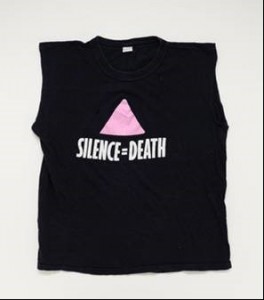ACT UP: QUEER HISTORY IN THE MUSEUM
By Rosie Hancock
When I was a kid, I loved going to the museum. There was a life-sized diorama of Auckland in the 1880s in the top floor of Auckland Museum and I cannot tell you how much I loved peering into the little houses and shops, and staring at the creepy mannequins in awkward poses. I learned so much going to the Museum – about Polynesian culture, Egyptian mummies, Dinosaurs, and colonial history. You know what I never learned about there though? Queer History. On the matter of homosexuals and their place in New Zealand society, Auckland Museum maintained a stony silence.
So I was pretty excited when I heard that the Powerhouse Museum currently has an exhibition featuring – guess what – Queer History! Ok ok it’s not all Queer stuff. But the exhibition – Disobedient Objects – has objects collected from various social movements and revolutionary struggles, and in the mix is a few items of great interest to the amateur Queer historian.
The rainbow placard from a Russian protest, the loomed ‘Gay Bashers come and get it’ banner from the New York City Dyke March, the ‘Homosexual? Arrested?’ brochure handed out on Edinburgh buses (my favourite). These are objects that tell a story of resistance and pride. But the exhibit that most captured, for me, the determination, solidarity, and sobering reality of Queer protest movements was a little glass display housing a badge, a poster, and a t-shirt from the ACT UP protests of the 1980s.
Images courtesy of the Powerhouse Museum
ACT UP formed in 1987 in New York City as the AIDS Coalition to Unleash Power. AIDS had first come to medical and pubic attention in 1981. By the end of 1987 59,572 cases had been reported in the US. 29,909 of those people had died. AIDS research was under-funded, requests for additional funding from government were routinely denied.
This was, of course, the Reagan era. Right-wing conservatism ruled supreme in America, and the Republican party relied upon conservative evangelical Christians for their support. Jerry Falwell, poster boy for the evangelical Christian right, portrayed AIDS as a punishment from God for the sins of homosexuality. Without government support, the epidemic flourished.
ACT UP formed to bring public awareness to the epidemic and advocate for the gay community. They staged sit-ins, and organised protests, and activists were arrested. They mastered the art of media attention, tipping off news agencies of their planned actions in advance to ensure maximum coverage. They also employed all the strategies of advertising and design to get their message out, and make an impact. That pink triangle? It’s a rather brilliant reclamation of the purple triangle the Nazi’s sewed onto the clothing of homosexuals in the concentration camps.
In October 1988, ACT UP symbolically ‘occupied’ the FDA headquarters in Maryland – blocking off entrances, attempting to force their way inside and filling the surrounding area with protesters. You can read about their meticulously planned campaign here, and also see their list of demands – including the demand that ‘the FDA must support rather than harass community groups working to keep community members alive.’
ACT UP were remarkably successful with their campaigns – funding increased for AIDS research and a greater number of clinical trials became available. And they’re still active. ACT UP members were, most recently, arrested participating in Occupy Protests in New York.
You can read more about ACT UP and the development of their design aesthetic here, and visit their website for heaps of interesting information about their history, the history of AIDS activism, and their current work.
Disobedient Objects is showing at the Powerhouse Museum until 14th February. More information on the exhibition can be found on the Powerhouse Museum website.



